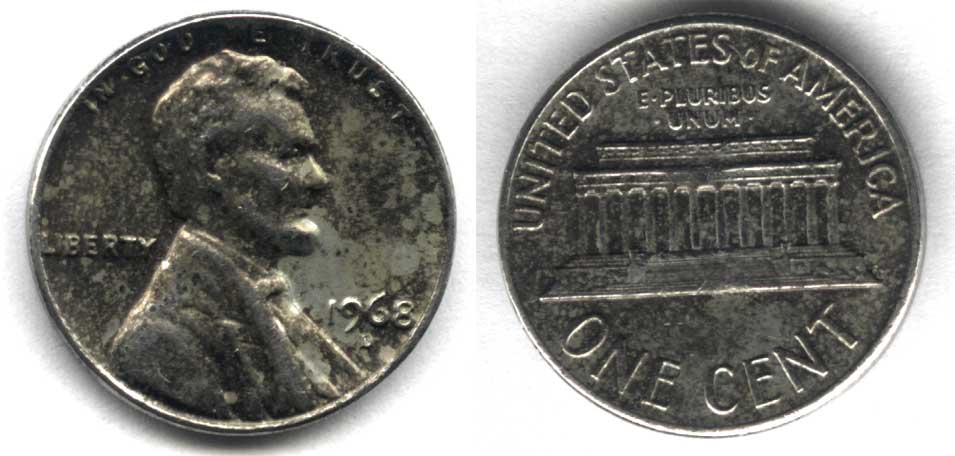Options
1968-D Silver Lincoln Cent
 SemperFI
Posts: 802 ✭✭✭
SemperFI
Posts: 802 ✭✭✭
I started a thread asking some general info about this coin. Well, now I have this coin and I really do belive it IS silver. It does not sound like a plated coin and has a weight of 3 grams. (That is exact as I can get with my digital scale) If it plated they would have to have done it after it circulated as there is some wear and some bag/circulated marks through out the coin. There is considerable detail on the reverse where lincoln sits.
The coin is not corroded but it is tarnished. Should I take a chance and give it a quick dip or should I send it to NCS and have them take a look at it for authentication and conservation?
Below is the ugly picture of this coin.
Feedback please.

The coin is not corroded but it is tarnished. Should I take a chance and give it a quick dip or should I send it to NCS and have them take a look at it for authentication and conservation?
Below is the ugly picture of this coin.
Feedback please.

0
Comments
-YN Currently Collecting & Researching Colonial World Coins, Especially Spanish Coins, With a Great Interest in WWII Militaria.
My Ebay!
Dan Watson
First Place Winner of the 2005 Rampage design contest!
Is that Lincoln Cent on a Cent, Dime, Quarter or half dollar planchet? In 1964 they had silver coins being minted. In 1968, the only silver coin being minted was the 40% JFK half and my coin is not on the Half Planchet.
Is there any chance that a 40% Silver sheet was was fed into the cent planchet making process? Would that make the cent thicker tho?
I believe it was soaked in mercury by some high school or college Chemistry student.
One of the deep scratches shows copper color under a 40x lens.
Specific gravity test is probably your best bet to determine metal type.
Know anyone taking a chemistry (or physics) course ?
<< <i>
Know anyone taking a chemistry (or physics) course ? >>
Density is extremely easy to determine. Just weigh the coin in water and subtract
that from it's weight. Its weight divided by this difference is its specific gravity.